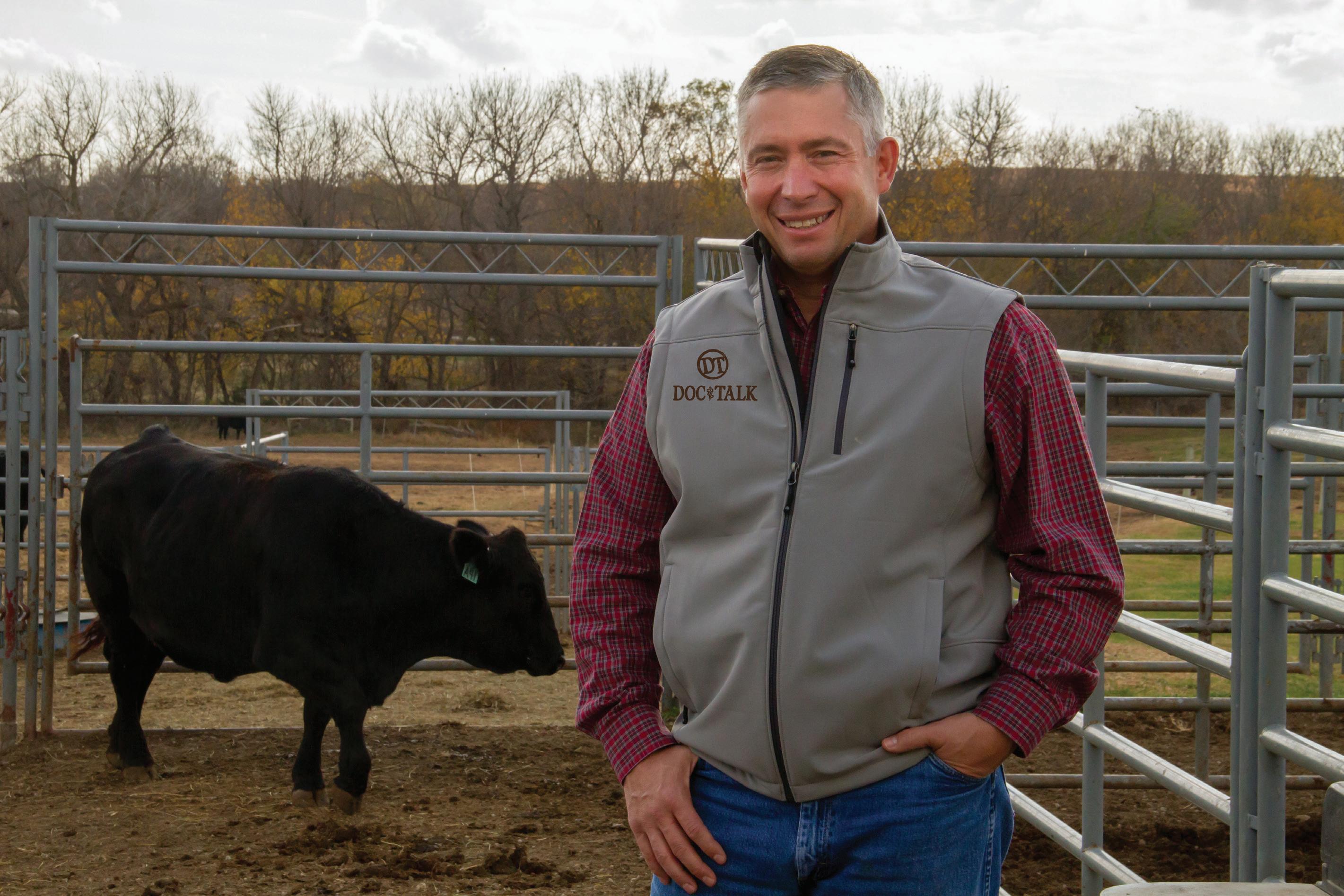
3 minute read
Nutrition Impacts Feedlot Health, Part 2: Preweaning Nutrition
By: Jeremy Martin, PhD, Great Plains Livestock Consulting Inc.
In the last issue of Protein Producers, this series started with a review of the effects of cow nutrition during gestation on feedlot health of her unborn calf. As the spring calving season gets underway across much of the country, we turn our focus to nutrition of the calf from birth until weaning and the role that period plays in feedlot health later in the life of the calf.
Colostrum is the first source of nutrition for calves and their source of passive immunity. Calves that fail to receive adequate colostrum are more likely to experience sickness before weaning and as much as three times more likely to require treatment during the feedlot phase. Prior to birth, immunoglobulins (Ig) are not able to cross through the placenta to the calf but are concentrated in the colostrum. Transfer of Ig to the colostrum begins about 5 weeks before calving and is most prevalent in the last 2 weeks of gestation. After birth, the intestines of the calf are permeable to Ig contained in colostrum, but this permeability spontaneously ceases within 24 to 36 hours after birth in calves that have not nursed. In calves that have nursed, intestinal permeability to Ig comes to an end much more rapidly, meaning the quality and volume of colostrum consumed during the initial nursing episode are the primary determinants of calves receiving adequate passive immunity. One factor in Ig content of colostrum is immunity of the cow, so take the time to discuss cow vaccination programs with your veterinarian.
The biggest issue for the newborn calf in most cases is simply making sure colostrum is received in a timely fashion – essentially the sooner the better. As far as beef breed calves go, this means that calves born in situations where weather, calving difficulty, maternal behavior, cow udder quality, or other aberrations in the natural process occur become prime candidates for sickness later in life. Cow age is also a factor. Calves from first-calf heifers are less likely to get adequate quality or volume of colostrum than calves from mature cows. One concern worth noting is the estimated 20% or more of Holstein steer calves that do not receive colostrum prior to being sold as dairy-beef calves according to Penn State Extension. The other issue with Holstein calves is that Ig concentration tends to be low in colostrum from Holstein cows, so a greater volume of colostrum must be administered to achieve sufficient immunity. The passive immunity a calf derives from colostrum serves it well through 5 to 6 months of age, after which the calf’s own immune system must develop with the help of appropriate vaccinations.
Before weaning, the majority of nutrients received by beef calves come from their dam’s milk and pasture. Limited data indicate creep fed calves may experience less morbidity in the receiving phase, but a small percentage of calves are creep fed. Additional research comparing preweaning mineral programs to feedlot health is available and is important since trace mineral status of calves affects immune function, including the ability of a calf to respond to preweaning vaccinations. Zinc, copper, manganese, cobalt, and selenium are trace minerals that play roles in immune responses of cattle, along with vitamin E. Since forages across most of the country are deficient in these elements, supplementation is necessary to achieve adequate mineral status prior to weaning. Preweaning is a critical time since the stress of weaning, transportation, etc. typically reduces calf intake and the stress response occurs before feedlots have had an opportunity to correct pre-existing deficiencies known to exist in approximately 35% of incoming cattle (Spire, 2002 Kansas State Vet Quarterly).
Research from western Nebraska (Grotelueschen et al, 2001 The Bovine Practitioner) compared feedlot health of calves based on the mineral program fed to cow/calf pairs before weaning. Pairs were supplemented with no trace minerals, inorganic trace minerals, or organic trace minerals from Zinpro 4-Plex through the grazing season. At weaning and feedlot entry, those calves supplemented with organic trace minerals had statistically higher liver stores of zinc, copper, and manganese than controls while calves supplemented with inorganic minerals had greater liver copper concentration than controls. More importantly, calves receiving organic mineral supplementation had higher titer response to vaccination and reduced morbidity (0.51 vs 0.80 total treatments per head) during the feedlot phase. When today’s economics are applied, the marginal cost of using organic minerals is minimal compared to the cost of feedlot morbidity.
In summary, nutrition from birth to weaning has an effect on feedlot health of calves, with failure of a calf to receive adequate transfer of passive immunity through colostrum being the first risk. Beyond that, the most comprehensive study currently available suggests calves supplemented with organic trace minerals prior to weaning experience fewer treatments in the feedlot. Any opportunity to manage risk prior to weaning is a bonus, but it is important to be aware of the opportunities to manage calf immune status at the ranch level as we move to discussing receiving nutrition in the next article of this series.











